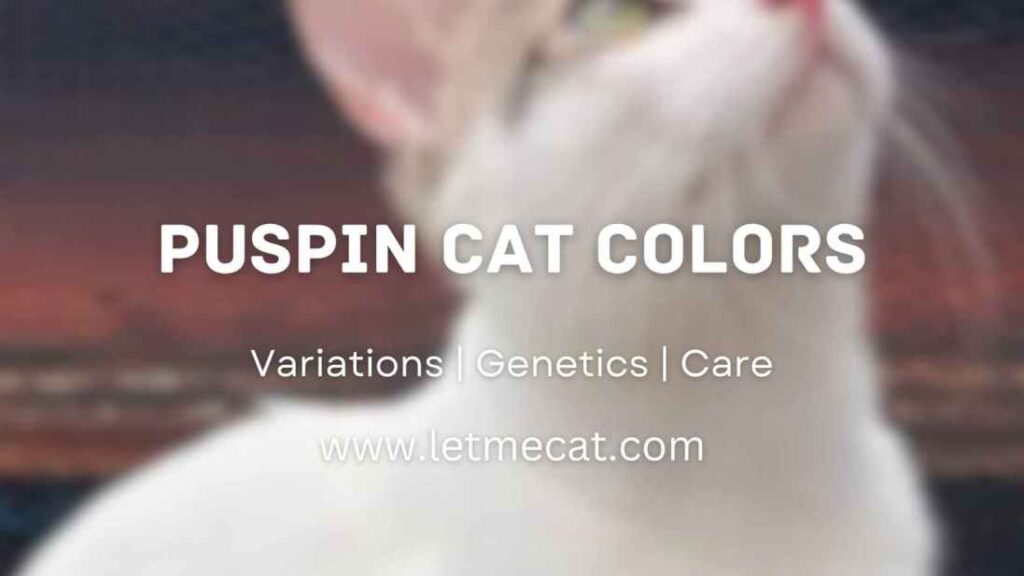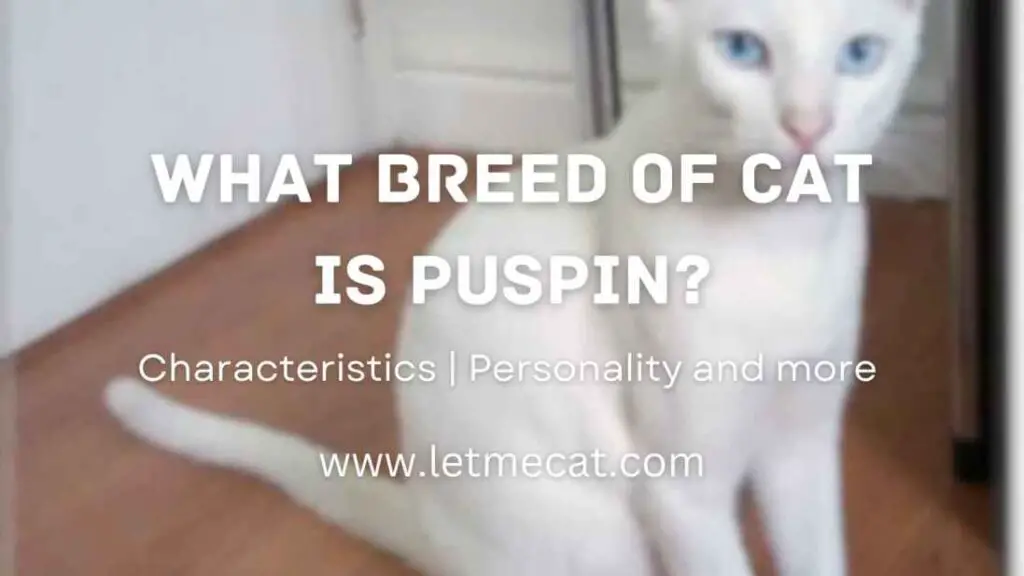In this article, we will explore the Puspin cats breed, discussing their history, physical characteristics, temperament, care requirements, and more.
History of Puspin Cats
Puspin cats have been a part of Philippine culture for centuries. They are deeply rooted in local folklore, appearing in traditional stories and literature. Their origins can be traced back to the native cats that roamed the Philippine islands long before the arrival of foreign cat breeds.
Puspin cats have thrived in the local environment, adapting to the tropical climate and becoming an integral part of Filipino households.
Physical Characteristics of Puspin Cats
Puspin cats display a wide range of physical characteristics. These are:
- Puspin cats come in various sizes, with most falling into the medium-sized category.
- They have a wide assortment of coat colors and patterns, including tabby, tortoiseshell, solid, and bicolor.
- Puspin cats have expressive eyes that range from amber to green, adding to their captivating charm.
Temperament and Behavior of Puspin Cats
See the below points:
- Friendly and adaptable nature
- Intelligent and quick to form strong bonds with humans
- Highly curious and enjoy exploring their surroundings
- Playful and often entertain themselves with toys
- Engage in interactive play with their owners
Caring for a Puspin Cat
- Ensuring the well-being of your Puspin cat requires providing proper care and attention. Regular veterinary check-ups are crucial as they help monitor your cat’s health and address any potential issues promptly. It’s recommended to schedule check-ups at least once a year or as advised by your veterinarian.
- A balanced diet is essential for your Puspin cat’s overall health. Opt for high-quality cat food that meets their nutritional needs, preferably with real meat as the primary ingredient. Supplement their diet with occasional treats, keeping in mind portion control to avoid overfeeding.
- Grooming Puspin cats is relatively easy. Although they are generally good self-groomers, occasional brushing helps remove loose hair and prevents matting. Additionally, it provides an opportunity for bonding and allows you to check their skin and coat for any abnormalities.
- Regular exercise and mental stimulation are vital to keeping your Puspin cat happy and content. Engage them in interactive play sessions using toys, provide scratching posts or cat trees for them to climb and explore, and create a stimulating environment to prevent boredom.
Health and Common Issues
- Like any other cat breed, Puspin cats may experience certain health issues. Dental problems, such as periodontal disease, can be a concern. It’s important to introduce regular dental care, including brushing their teeth and providing dental treats or toys designed to promote oral health.
- Obesity is another common issue that affects cats, including Puspins. It’s crucial to monitor their weight and adjust their diet accordingly, ensuring they receive appropriate portions and engaging them in regular exercise to maintain a healthy weight.
- Puspin cats are susceptible to common feline diseases such as feline viral rhinotracheitis, calicivirus, and panleukopenia. Vaccinations are essential to protect them from these diseases, so it’s recommended to follow a vaccination schedule provided by your veterinarian.
- Regular check-ups with your veterinarian are important to detect any potential health issues early on. Your vet can perform physical examinations, administer vaccinations, and recommend preventive treatments for parasites like fleas and ticks.
Puspin Cats as Pets
- Puspin cats make wonderful pets due to their adaptable nature. They can thrive in various living environments, including apartments and houses, as long as they have enough space to move around and receive proper care and attention.
- One of the standout qualities of Puspin cats is their loyalty and affection towards their human companions. They often form strong bonds and enjoy spending time with their owners. Their loving and gentle nature makes them ideal companions for individuals and families alike.
- Puspin cats are generally good with children and can be excellent family pets. However, it’s essential to teach children how to interact respectfully with cats and supervise their interactions to ensure the safety and well-being of both the child and the cat.
- With proper introduction and socialization, Puspin cats can coexist with other pets such as dogs and cats. It’s important to give them time to adjust, provide separate spaces if needed, and monitor their interactions initially to ensure a harmonious relationship.
Adopting a Puspin Cat
- When considering a Puspin cat as a pet, adoption is highly encouraged. Many Puspin cats are in need of loving homes, and adopting from local shelters or rescue organizations not only brings joy to your life but also makes a positive impact on the community.
- Shelters and rescue organizations often provide Puspin cats that have been spayed/neutered, vaccinated, and medically screened. This ensures that your adopted cat has received essential care and helps in reducing the stray cat population.
- Adopting a Puspin cat is a rewarding experience that offers a second chance at life for these amazing felines. By giving them a loving home, you provide them with comfort, security, and a bright future filled with love and care.
Training and Socialization
- Training and socialization are crucial for Puspin cats to become well-adjusted members of your household. Start training from an early age using positive reinforcement techniques, which involve rewarding desired behaviors with treats, praise, or play.
- Basic commands such as sit, stay, and come can be taught using positive reinforcement. It’s important to be patient and consistent during training sessions, keeping them short and engaging to maintain your cat’s interest.
- Puspin cats are intelligent and can quickly learn to use a litter box. Introduce them to a litter box early on and reward them when they use it correctly. Providing scratching posts and teaching them to scratch on appropriate surfaces can also be part of their training.
- Socialization should start early to ensure that Puspin cats are comfortable around new people, animals, and different environments. Gradually expose them to various experiences, sights, and sounds to build their confidence and prevent fear or anxiety later in life.
Puspin Cats in the Community
Puspin cats hold a significant place in the Filipino community, symbolizing the country’s rich culture and heritage. They are considered national treasures, representing the native cat population of the Philippines.
Various organizations and events celebrate Puspin cats, promoting their unique qualities and advocating for their welfare. These initiatives help raise awareness about the breed, encourage responsible pet ownership, and highlight the importance of supporting local animal welfare efforts.
By embracing Puspin cats and supporting local initiatives, individuals can actively contribute to the preservation and appreciation of this special breed. This can include volunteering at shelters, donating to rescue organizations, or participating in community events that promote the well-being of Puspin cats.
Conclusion
Puspin cats are an integral part of Philippine culture and a cherished breed among cat enthusiasts. Their rich history, diverse physical characteristics, and affectionate temperament make them captivating companions. By providing proper care, training, and socialization, Puspin cat owners can create fulfilling and lasting bonds with these remarkable felines. Consider adopting a Puspin cat and experience the joy and love they bring to your life.
Thank you for reading it.




Pingback: Puspin Cat Colors: Variations, Genetics, Care - Let Me Cat
Pingback: What Breed Of Cat Is Puspin? Personality, Characteristics, And More - Let Me Cat